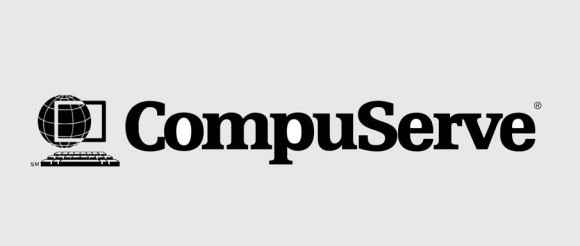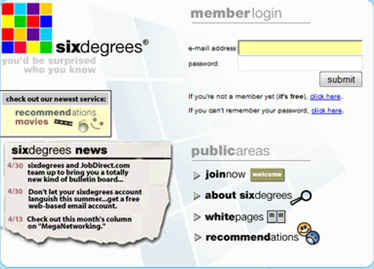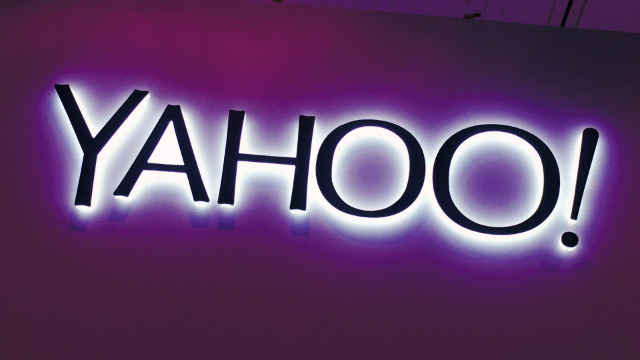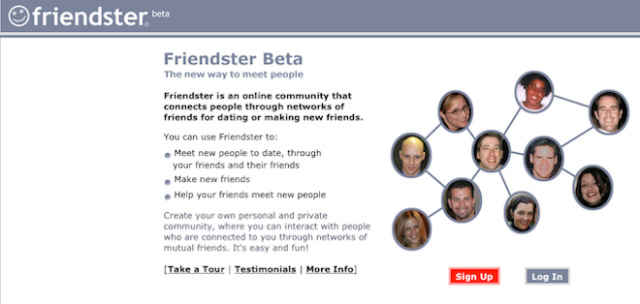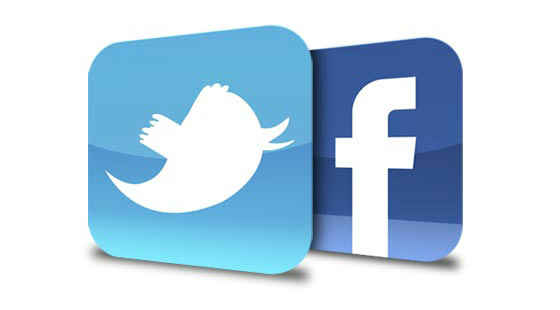The origin and history of social media
Until about two decades ago, the world was not as connected as it is today. In this month’s Origins, we trace the roots of the social media as it stands today.
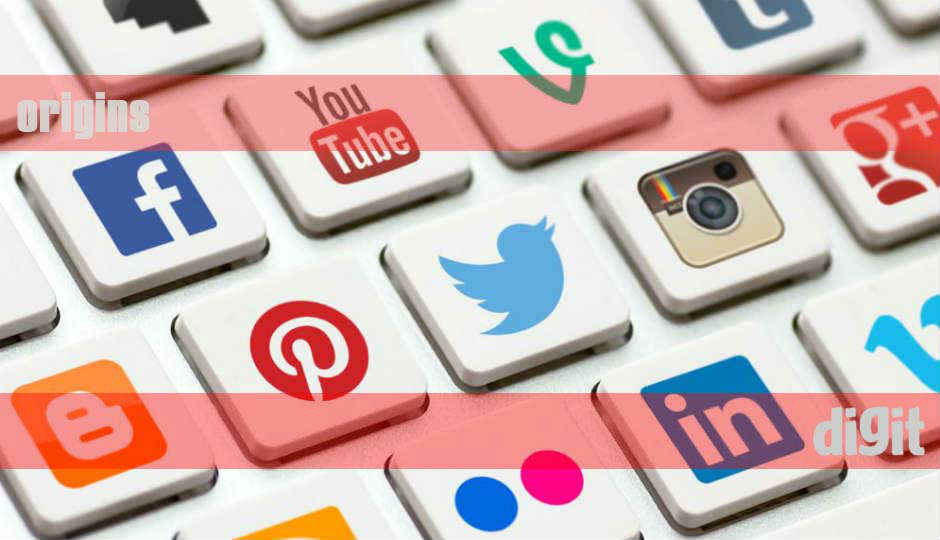
Social media is a field spread out wide across the Internet, encompassing vast legions from across the world pouring our heads and hearts out to anyone who would care to listen. There have been innumerable arguments about it: the impact it has had on our society, the way it has been setting mental construct, and how it has contributed to our growing dependence on technology and a need for approval of what we think and do. Numerous research and statistics have pointed to social media having an unthinkable impact on everything, be it for the positive or negative.
 Survey
SurveyThe world of social media opened a completely different field of analysis in itself. We now analyse trends, observe behaviour and connect the dots to conclude on how large sections of populations are feeling, what nations are talking about, and more. Publications and industries alike nowadays consider social media with prime importance to ensure they reach out to the widest possible audience. Publications are increasingly shifting to an online-first model of work, and social media plays a crucial role in retaining the readership of them.
It is interesting to note that while none of these existed online about two decades ago, their physical counterparts were present in abundance. What social media essentially did was bring everything online, creating digital avatars of our own selves. Here, we try to trace the roots of where it all began, how it took the eventual course of evolution, and everything that influenced the rise of social media from chat windows with tacky backgrounds to the thriving, connected world that it is today.
The Roots
Understandably, the world is divided in opinion on the singular source that led to the evolution of social media. Rather than fixing a year or a web portal as the point of origin, the formation of World Wide Web and the subsequent increase in instantaneous connectivity of the Internet is regarded as the starting point of social media. The rise of Internet gave the world the power of near-instant communication, which, in the subsequent years to follow, would open up a world of possibilities, and the landscape of social media.
The earliest social media can be traced back to the 1970s, with the likes of CompuServe and Bulletin Board System. Back in the ‘70s and ‘80s, CompuServe presented for the very first time something that the world had never really experienced before – instantaneous communication with friends residing miles away. Admittedly, connectivity was scarce and the technology was limiting, but for the limiting few privy to CompuServe, this was a fascinating experience. Individuals on CompuServe could only send and receive text messages, which were basically emails. Like something that had never happened before, messages could now be received and replied to within minutes, although the speed of data transmission back then was incredibly slow.
The very first days of text messages were with CompuServe
CompuServe was also the very first instance of online forums – a place where people got to meet hundreds of others, and discuss events and incidents in real time. This was the first real instance of social media – a medium for individuals to present a digital avatar of themselves and express their own opinions on varying subjects. For the ones who had access, CompuServe’s forums proved immensely popular, exhibiting to the world the possibility that worldwide connectivity had.
About a few years later, BBS (or Bulletin Board System) presented what can be termed as the Internet’s first file transfer system. BBS units were mostly based on local networks and hosted by hobbyists looking to experiment with technology and the Internet. Individuals could log on to a central host and use it to communicate, or even download games and movies. Much of this content was pirated, giving rise to what may seem like the forefather of peer-to-peer file sharing and Torrent downloads.
These, individually, can be regarded as the initial instances of social media. However, the world of online social networking really took off when the Internet came within the reach of the common people in the ‘90s, and this is when it really took off.
The Formative Years
In the 1990s, the world was evolving rapidly to the connected forefront. Personal computers had evolved in popularity in developed nations, and people started realising the potential that a connected world may have. Hence rose IRCs, or Internet Relay Chats, in 1988, and became popular in 1990. This was a rudimentary form of text messaging and instant communication, and not until 1997 did we see the first full-blown social medium come into being.
Six Degrees was an online platform that allowed users to create their own profiles and ‘friend’ others on it. This was, in the true sense, a precursor of greater days for social media, and the fact that Six Degrees also allowed users to add unregistered people as friends too showed the global impact that social media would eventually have all across the world. The platform was named after the ‘Six Degrees of Separation’ theory. Originally proposed back in 1929 by Frigyes Karinthy in light of a shrinking world, the theory suggested that everyone in this world is connected and interconnected by no more than six degrees, or individuals, in between. With the advent of social media, the theory took even more profound a meaning, and the world shrunk further.
The very first instance of social media as we know today was Six Degrees
Six Degrees even allowed for creation of groups on the medium, and users could browse through each other's profiles, too. However, with a lack of proper filtering and inefficient clearing of spam, Six Degrees slowly faded out by around 2002, and lost what actually was the forefather of social media the way it is today. The first really successful social medium that is still thriving happens to be Classmates.com, founded back in 1995. The website worked in the form of providing virtual reunions of classmates from years ago. The earliest users did not have the ability to create profiles, but people could search for each other based on information supplied regarding schooling and college years. As features and options were subsequently added, Classmates.com went on to become one of the most successful social medium around, and reportedly has over 70 million users worldwide.
This led to a number of similar social media platforms coming into being. The America Online Limited, popularly known as AOL, has also played a crucial role in the success of social media. In hindsight, AOL had one of the most forward-thinking aspects that took the Internet forward by providing information and a medium for communication, in one place. It has often been referred to as the Internet of the Internet, and was among the very first that provided member-driver communities to discuss and exchange information. AOL grew into a great conglomeration of features and platforms, and its initiatives have continuously catered to the young, Internet generation by providing stories that were region- and time-agnostic, and could provide a medium for large sections of the population to relate to. This is what gave rise to blogs, and the notion of ‘viral content’, which would take center stage many years later.
Yahoo! was the most-used search engine back in the '90s
Marketplaces and search engines were slowly coming into being from the mid ’90s. Yahoo had set up shop by then, and quickly went on to become the most popular search engine back then. Yahoo had also popularised email services, and gave rise to one of the most iconic chat services of all time – Yahoo Messenger. Quirky backgrounds, an easy layout that promoted casual chatting and the concept of ‘chat rooms’ to house group chats became popularised in the early 2000s, and Yahoo was at the center of it all. Region-specific social sites were the next to follow, with the likes of BlackPlanet.com and AsianAvenue.com catering to African-American and Asian users, respectively.
The formative years could be noted till around 2002, when all the legendary forefathers of social media were setting up shop. From present times’ perspective, these years can also be termed as the pre-Facebook era. These are the features and platforms that laid the base for social media to become a global phenomenon. By 2000s, the race to have a personal computer at home had spread beyond developed countries, and by around 2003, many Indian households were privy to PCs and abysmally slow Internet connections. Naturally, graphic-intensive content remained impractical for the longest time, and chat-based services remained prevalent. Google slowly came out of the shadows with Orkut, Myspace was rampant at one time, Facebook was born, and LinkedIn and Twitter all amassed millions of users worldwide.
The Birth of Viral Content
It is since 2002 that social media spread its wings and became what it is, today. Friendster, formed in 2002, really cracked the code for a social media platform that was embraced by as many as three million users in its heyday. The site’s interface resembled that of a dating site, and this relatability worked in getting users accustomed to it. The fundamentals of it lay in providing ‘Circles’, or common interests where users with absolute common interests could join, share, discuss and make friends. This has long been accepted as the founding principle of social media, where users with varied interests come together to share their own opinions, and find like-minded people to discuss the topics with.
Although Friendster got off to a fantastic start, and may have even reached the pinnacle of social media charts at its peak, flawed management practices and other aspects led to its notable downfall. This was soon followed by a social medium that took an entirely different approach to the established aspects of social media till now. LinkedIn, formed in 2003, was aimed specifically at business users to form professional networks and business connections. This platform took a more serious approach at social media, far from finding yesteryear classmates or lovers of chocolate ice cream from across the world.
The first social medium to present 'friend circles' was Friendster in 2002
LinkedIn grew steadily, and particularly because of its unique stance, was not vividly affected by the rise of Facebook and Twitter. As of August 2016, LinkedIn has 450 million users on its platform, and is actively used by organisations to connect professionally. On the same year, MySpace came into being. Yet again a far shot from LinkedIn, MySpace showed the world the fun behind social media, majorly promoting music, videos and quirky graphical content that soon became wildly popular. Until the meteoric rise of Facebook, MySpace really ruled the roster of social media, until it went on a gradual decline, and now is only present as a site for musicians to share their work on. MySpace was also one of the first to introduce ‘Featured Content’ – highlighted stories on various topics, that subsequently led to the rise of ‘viral content’.
The king of the hill, Mark Zuckerberg’s brainchild Facebook was formed in 2004 as Harvard’s in-house platform. It went public only in 2006, but by then, it was already considered as a revolutionary being. Facebook presently boasts over 1.3 billion users on its platform, and has an unthinkable number of features. The opening of its API and the rise of connected mobile phones gave way to third party service providers making applications, games and other services that would work within Facebook. The medium gave rise to a certain level of openness that many state has been the crucial factor behind its worldwide empire today. A rather different advertisement model attracted more and more businesses on to Facebook, the ‘Like’ button became a revolutionary synonym to emotions, and Facebook started forming the basis of statistical studies, analyses, and ‘sharing’ information from one corner of the world to another was never easier.
"Facebook and Twitter really took social media further"
Twitter was born in March 2006, and in response to Facebook, gave a completely different approach to social media. You could express all that you wanted, but only in 140 characters. The platform has over 300 million monthly users right now, and with the rise of mobile internet, added the aspect of instantaneous updates to the world to social media. This was not something that you partake in your pastime, but what you do on the go. Twitter was also among the first to be embraced by publications, and the format of quick headlines on the go made this platform an attractive place for corporates and college-goers alike to tune in to it.
By 2007, we had entered an era of consolidation already. Friendster had ended, people were moving from Yahoo Messenger to Google Talk, MySpace was gradually slowing down, and although LinkedIn continued on a different path, it really was Facebook and Twitter that took social media further. Frequent updates meant lesser discrepancies in usage, and a fairly easy format of usage led to the notable rise of these two in the online world. While Facebook was often looked upon as a platform to upload your tour experiences and express your opinions in elaborate detail, Twitter was an easy place for everyone to quickly express feelings, reach out to companies and join the public debates. Twitter is also accredited with the popularisation of hashtags, which gave rise to a fad among the youth. Hashtags became an inseparable part of everyone’s lives, and the addition of emojis meant you had easier ways to express in lesser words.
Orkut was wildly popular, particularly in Brazil and India
Amidst all of this, Orkut deserves special mention. Although not a global phenomenon and with a relatively low figure of about 100 million users at its peak, Orkut was particularly popular in Brazil and India. Google’s first tryst with social media, Orkut, faded out with Facebook and Twitter’s meteoric rise, and no new users could sign up since 2014. The social medium faced a number of privacy and legal issues, and although not the most refined, gave the world a fun, casual medium to communicate with. While Orkut may not have been a benchmark, it did put a severe dent in Yahoo’s user base, and brought the masses on to Google’s platforms.
Google’s second attempt was with Google+, a more recent phenomenon. Launched to the public in 2011, Google+ entered the world of social media after Facebook and Twitter had already consolidated their places in the industry. Google+ was built to be non-intrusive, and its live video chat feature, dubbed ‘Hangouts’, generated considerable hype on the Internet. Although Google+ did not really take over the throne from Facebook, it showed the potential scope for innovation in a saturated field.
The two that rule the social media roster today: Facebook and Twitter
Through all of this, grew a generation of users continually attracted to social media. Platforms like Facebook and Twitter have long integrated productivity and work features, and have matured into complete platforms where important business declarations are often made, and publications have a new medium to reach out to readers. This brought content closer to people, hence giving rise to ‘viral content’. Typically, viral content reaches out to millions, touching a similar chord among a vast audience. Viral stories, updates and tweets are shared by millions, giving birth to a world that is more spontaneous and updated with affairs.
It has also brought the world closer, and you are now more likely to find a common link in every three profile you see, than not. From being platforms used majorly for procrastination, social media have come a long, long way, now being lifelines for people to live by.
The Aftermath
To quickly note the impacts of social media, the likes of Facebook and Twitter redefined advertisements, laid out new guidelines for social communication, formed new professions, and essentially built a large section of the world that we live in today.
As Facebook continues its domination and Twitter prevails with hilarious snippets from everyone’s life, it is incredible to think that at times, the world would actually find it considerably difficult to communicate without social media.
